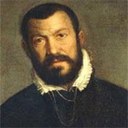0059 Vincenzo Scamozzi als Leser der antiken Schriftquellen und Denkmäler: Der "Indice copiosissimo" zu Sebastiano Serlio
Identifiers (Article)
Identifiers (Files)
Abstract
Already in his early youth Sebastiano Serlio's writings were well-known to Vincenzo Scamozzi. In particular Serlio's third book, dedicated to ancient Roman architecture, and his first two books on geometry and perspective, formed the background to Scamozzi's formation as an architect and theorist. His father Giovan Domenico Scamozzi, a surveyer and architect in Vicenza, played a crucial role in Scamozzi's education. Giovan Domenico compiled the comprehensive index included in Francesco de' Franceschi's new edition of Serlio's Architectura (1584), the "Indice copiosissimo delle cose più degne che si trovano per tutti i sette Libri d'Architettura". Vincenzo edited the index: some entries, those marked by a cross (†) were to be considered of great importance. Other entries, those marked by a comma (,), refer to comments and additions made by Vincenzo. These texts not only testify to Vincenzo's critical involvement with Serlio's works, but also demonstrate his method of reading and interpreting the sources, material and textual. The article investigates the relationship between the comments in the Indice and Vincenzo's own writings: those on the reconstruction of the baths of Diocletian, the Discorso sopra l'antichità di Roma, the Sommarii od estratti da antichi scrittori delle cose che appartengono alle antichità di Roma, as well as his notes in the margins of the treatises of Lucio Fauno and Daniele Barbaro. This provides a significant insight into the methods of research which led to Scamozzi's opus magnum, the L'idea della architettura universale of 1615.
Statistics


License

This work is licensed under a Creative Commons Attribution-NonCommercial-NoDerivatives 4.0 International License.



